If you’ve come across the okr vs kpi debate while researching ways to improve business performance, you’re not alone. Both are popular methods, but it can be tricky to know which one is right for you. This article will help, in simple terms, so you can make better choices for your organization.
What Are OKRs?
OKR stands for Objectives and Key Results. This popular goal-setting framework helps organizations define what they want to achieve (the “objectives”) and how they’ll measure success (the “key results”). For instance, if your objective is to improve customer satisfaction, your key results might be measurable targets like increasing positive feedback survey scores by 10%. OKRs push teams to stretch beyond their comfort zone, providing both direction and a sense of ambition. Companies like Google famously use OKRs to keep everyone aligned on big, inspiring goals.
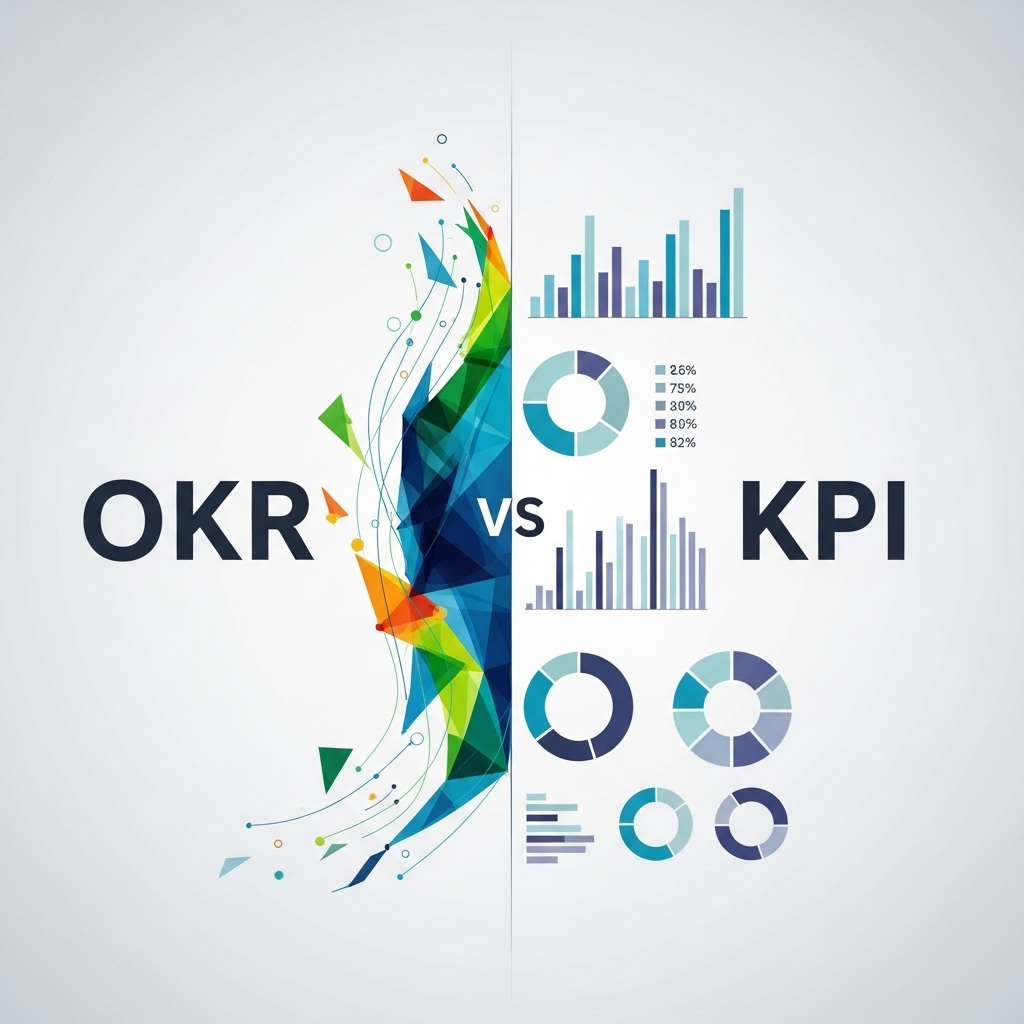
What Are KPIs?
KPIs, or Key Performance Indicators, are specific, quantifiable measures used to track how well an organization or individual is achieving particular business objectives. Unlike OKRs, KPIs are less about motivation and more about ongoing measurement. Think of a KPI dashboard as a car dashboard: it shows you vital signs, like how fast you’re going, or how much fuel you have left. KPIs might include sales figures, number of new customers, or website traffic. These measurements are widely used because they help identify areas of success and those needing improvement.
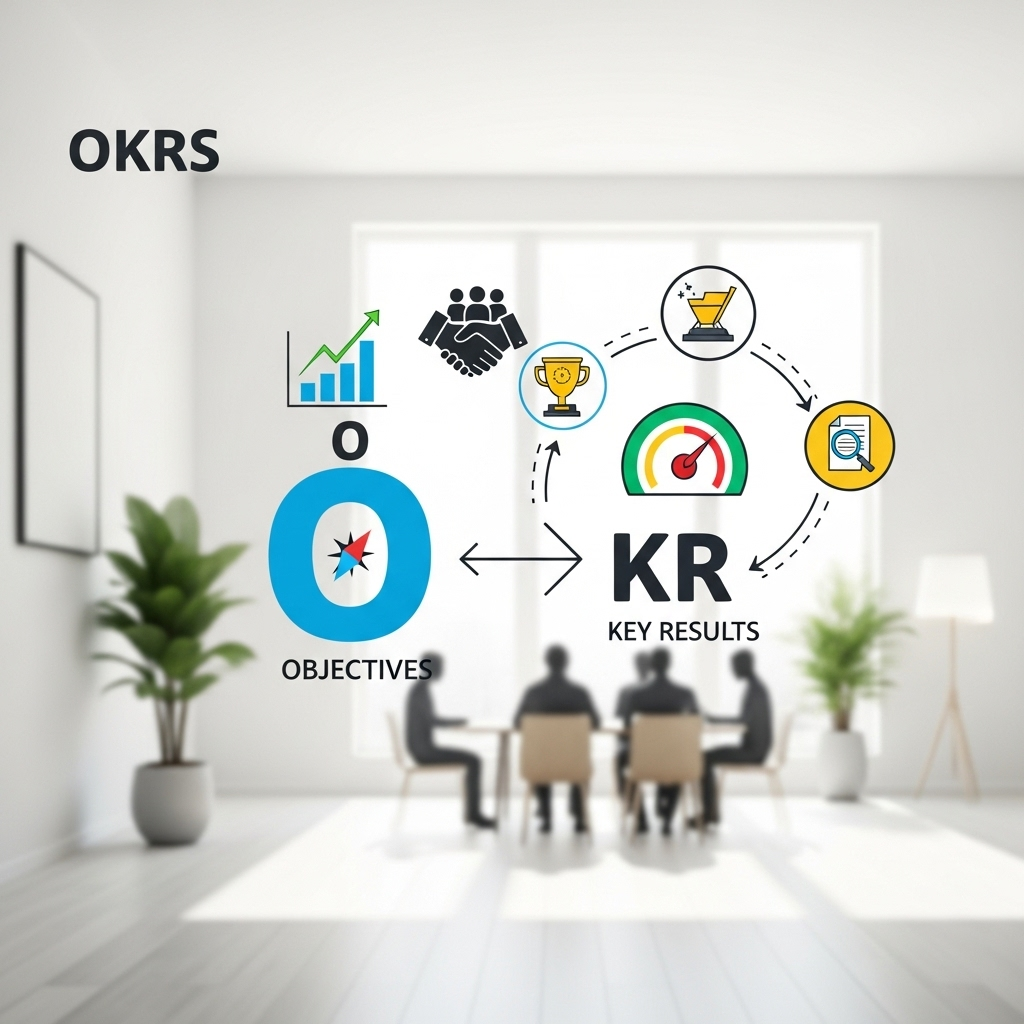
OKR vs KPI: Key Differences Explained
First of all, while both OKRs and KPIs involve goals and measurement, their purposes are different. OKRs are about vision and setting challenging, strategic targets. KPIs are more like benchmarks — they monitor everyday performance.
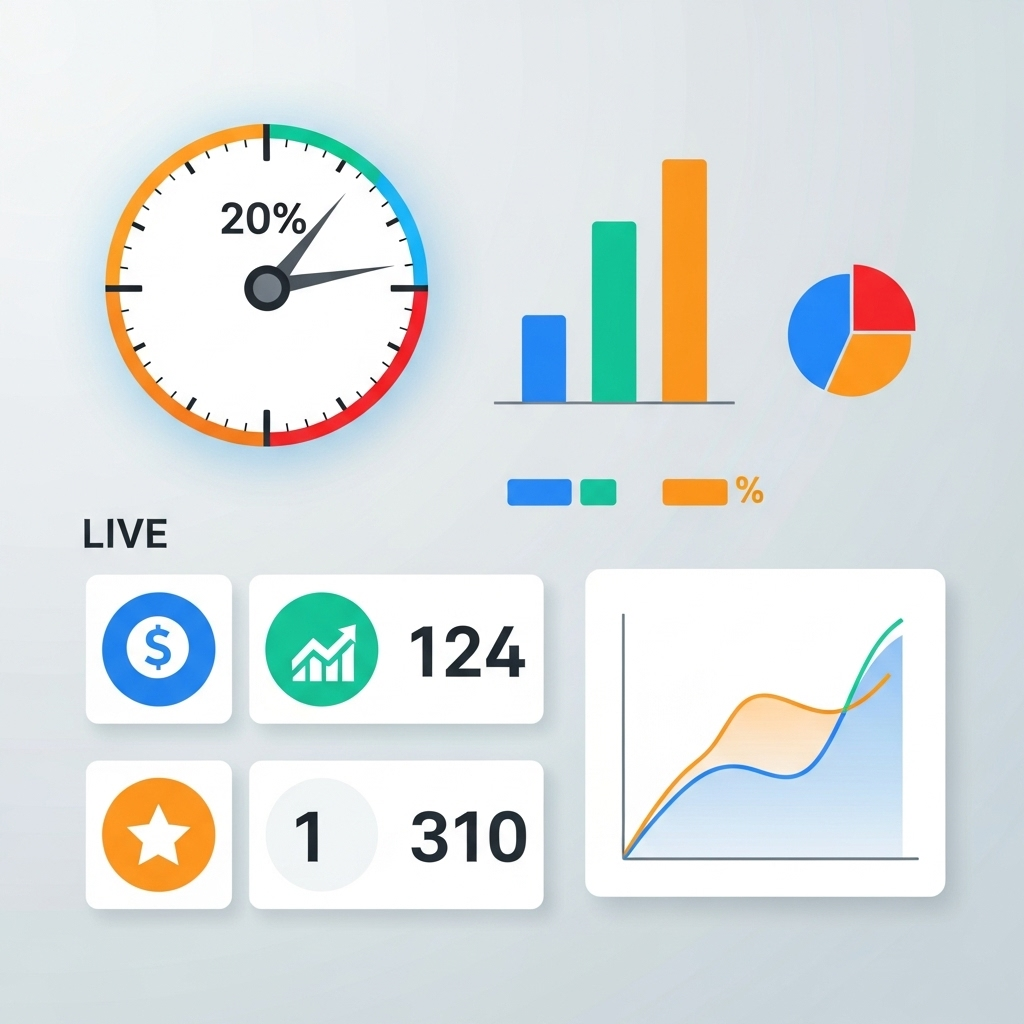
In the okr vs kpi comparison:
- OKRs focus on achieving ambitious changes. They are usually set for a fixed period (usually a quarter), and encourage teams to push limits.
- KPIs are about tracking the ongoing health of your organization’s critical processes.
Because OKRs are bold by nature, sometimes they’re not fully achieved. That’s okay, as they are meant to inspire big leaps. KPIs, however, are often designed to be reached regularly—they represent your expected performance.
When Should You Use OKRs and KPIs?
Choosing between OKR vs KPI frameworks depends on what you’re trying to accomplish.
- If your business needs focus, alignment, or a motivational boost toward a new direction, OKRs are a great fit.
- If you need to monitor operations and ensure ongoing stability, KPIs are your best friend.
- You can use both! In fact, most successful organizations integrate OKRs and KPIs to balance vision with consistency.
For example, a retail store may use KPIs to track daily sales, but set specific OKRs for launching a new product line over a quarter.
How to Track Progress with a KPI Dashboard
A kpi dashboard is a visual tool that brings all your key performance indicators together in one place. It lets you see your current progress at a glance, spot trends, and make quick decisions. Modern dashboards are interactive and cloud-based, such as those provided by Tableau or Google Data Studio.
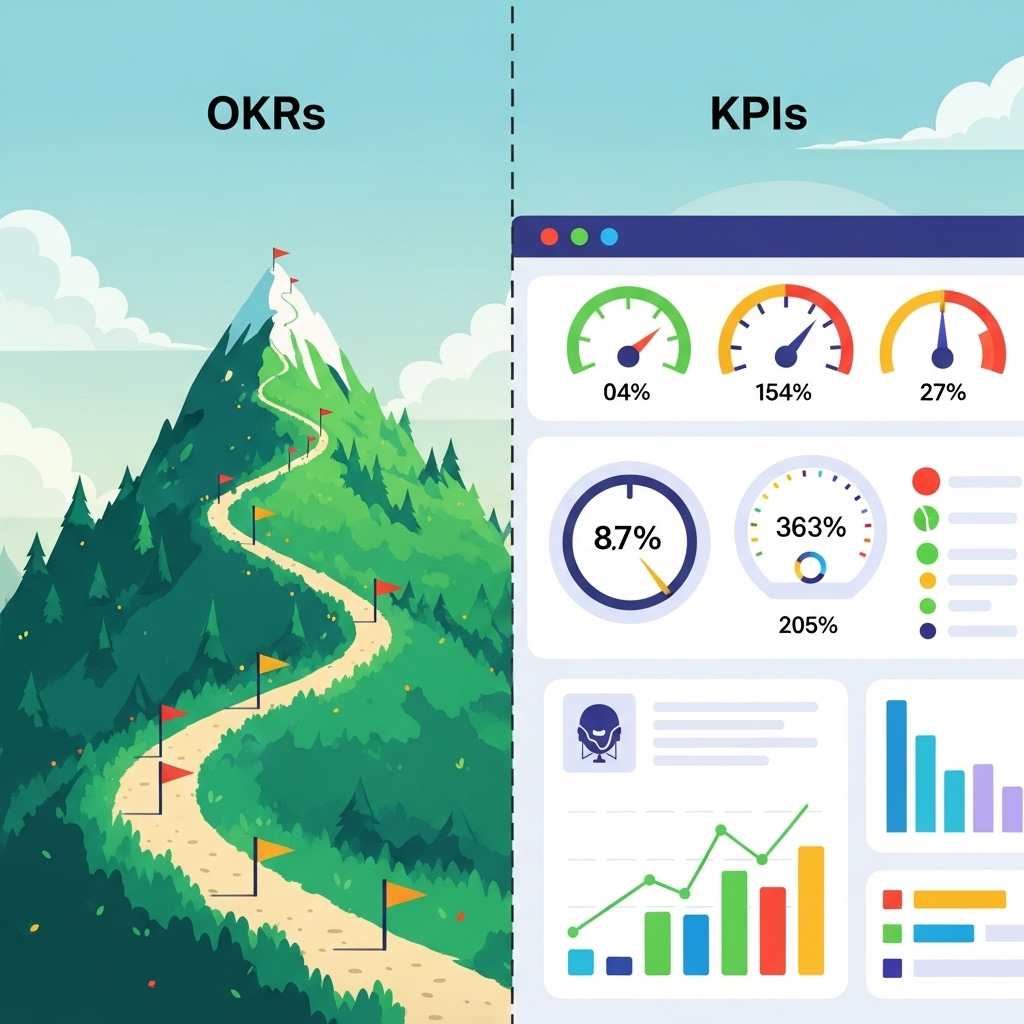
Building a kpi dashboard doesn’t have to be complicated. Start by selecting your most essential metrics, ensuring all team members understand what each KPI tracks and why it matters. Display these KPIs in clear, easy-to-read visuals. This way, you and your team can celebrate achievements and spot any issues that need attention right away.
OKR vs KPI: Common Misconceptions
- Misconception 1: You have to choose one or the other. Actually, you can and often should use both!
- Misconception 2: OKRs replace KPIs. Not true: OKRs supplement KPIs by adding ambition to your steady tracking system.
- Misconception 3: KPIs always measure outcomes. While they often do, KPIs can also measure inputs and processes.
- Misconception 4: OKRs are too complex for small businesses. In fact, companies of any size can benefit from OKRs—simplicity is key.
Which Approach Is Best for Your Organization?
The best approach will depend on your company’s stage, culture, and needs. For fast-growing or evolving businesses, OKRs foster innovation and unity. Traditional organizations with steady routines often rely on KPIs. However, combining both lets you track where you are while aiming higher.
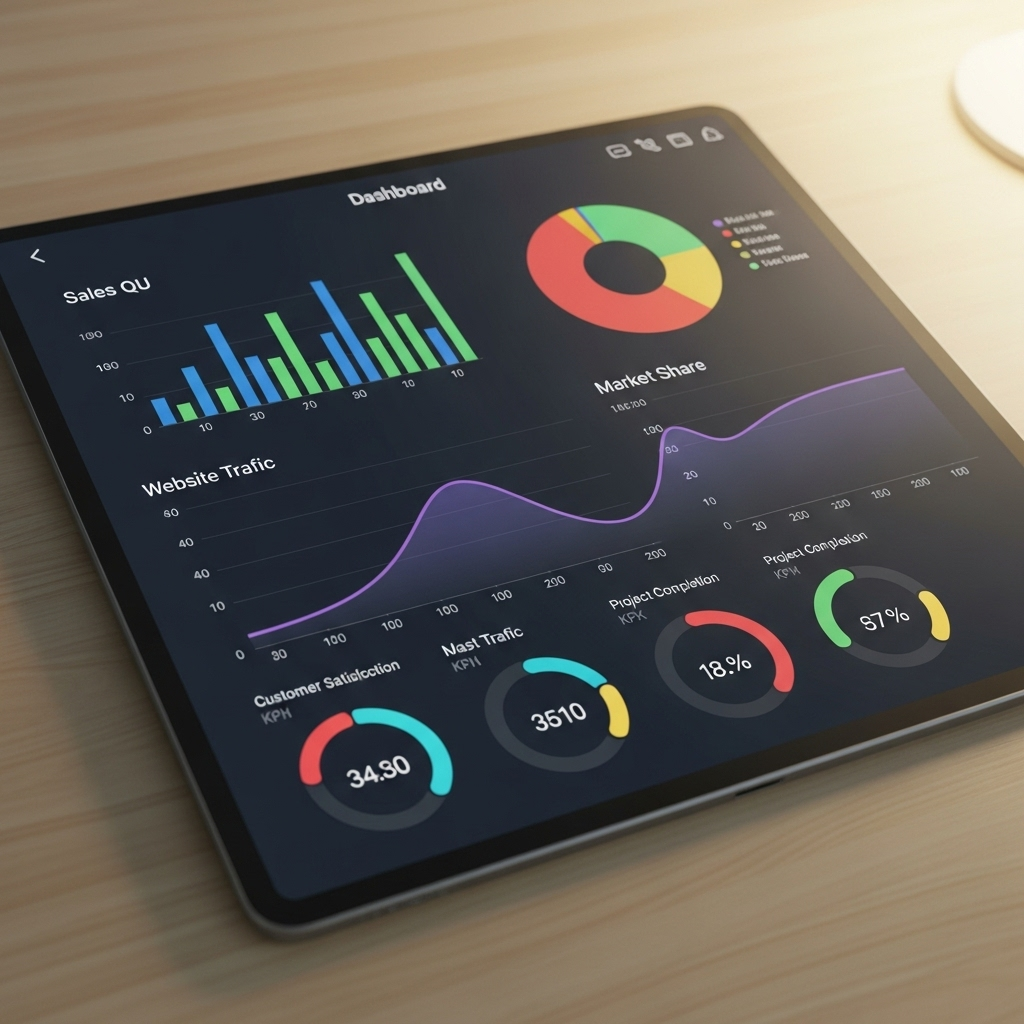
It can seem daunting to implement new systems, and you might feel unsure about where to begin. That’s why having a trusted partner like Blanmo can ensure your transition is smooth, letting you focus on what matters most—your people and your goals.
Tips for Getting Started with OKRs and KPIs
- Start simple: Don’t overwhelm your team with too many OKRs or KPIs. Choose a few that really matter.
- Involve your team: People work best when they feel involved. Invite input and let everyone help shape your objectives and indicators.
- Review regularly: Check your progress frequently. Adjust your OKRs or KPIs if they’re not serving your organization’s needs.
- Celebrate wins along the way: When you hit a key result or improve a KPI, mark the occasion. Motivation grows with recognition.
- Keep learning: Great resources and insights are always emerging.
Conclusion: Understanding okr vs kpi empowers you to make smarter choices and create a thriving, goal-oriented organization. With a clear structure and a focus on measuring what matters, you’re on your way to greater business success. And if you ever need expert help, know that support is always around the corner!
